Invented by Vladimir Mitelberg, Brett E. Naglreiter, Donald K. Jones, Apollo Endosurgery Inc
These procedures are typically performed using minimally invasive techniques, which offer several advantages over traditional open surgery. Minimally invasive procedures result in smaller incisions, reduced pain and scarring, shorter hospital stays, and faster recovery times for patients. As a result, there has been a significant increase in demand for methods that can effectively and safely perform submucosal surgical procedures.
One of the most widely used methods for submucosal surgery is endoscopic submucosal dissection (ESD). ESD involves the use of an endoscope, a long, flexible tube with a light and camera on the end, to visualize the area being treated. Specialized tools are then used to dissect and remove the abnormal tissue or growths. ESD has become the gold standard for submucosal surgery due to its high success rates and low complication rates.
Another method that has gained popularity in recent years is submucosal tunneling endoscopic resection (STER). STER involves creating a tunnel beneath the mucosal layer to access and remove the abnormal tissue or growths. This method is particularly useful for larger lesions or those located in difficult-to-reach areas. STER has shown promising results in terms of efficacy and safety, and it is being increasingly adopted by surgeons worldwide.
In addition to ESD and STER, there are several other methods and techniques being developed and refined for submucosal surgical procedures. These include submucosal injection techniques, such as submucosal saline injection or submucosal injection of viscous solutions, which help create a space between the mucosal layer and the underlying tissue for easier dissection. Other methods involve the use of specialized devices, such as submucosal tunneling endoscopic balloon dilation or submucosal tunneling endoscopic septum division, to facilitate the removal of abnormal tissue or growths.
The market for methods for performing submucosal surgical procedures is driven by several factors. Firstly, the increasing prevalence of diseases and conditions that require submucosal surgery, such as gastrointestinal tumors, urinary tract strictures, or airway stenosis, is contributing to the growing demand for these procedures. Secondly, the rising awareness among patients and healthcare professionals about the benefits of minimally invasive techniques is fueling the adoption of submucosal surgical methods. Lastly, advancements in technology, such as the development of more advanced endoscopic tools and imaging systems, are enabling surgeons to perform these procedures with greater precision and safety.
The market for methods for performing submucosal surgical procedures is highly competitive, with several companies and research institutions actively involved in developing and commercializing new techniques and devices. Key players in this market include medical device manufacturers, endoscopy equipment suppliers, and research organizations. These companies are investing heavily in research and development to improve existing methods and develop innovative solutions that can further enhance the safety and efficacy of submucosal surgical procedures.
In conclusion, the market for methods for performing submucosal surgical procedures is experiencing significant growth due to the increasing demand for minimally invasive techniques and the advancements in technology. With the development of new methods and devices, the future of submucosal surgery looks promising, offering patients safer and more effective treatment options for a wide range of conditions.
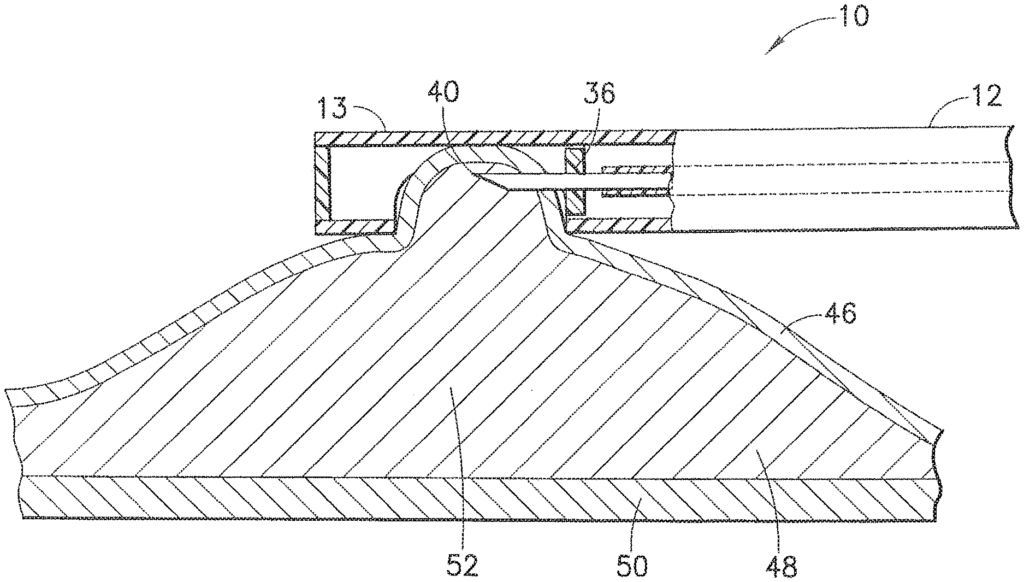
The Apollo Endosurgery Inc invention works as follows
Instruments, systems and methods for performing submucosal procedures using endoscopy are disclosed. Instruments include safe access needle injectors, submucosal tubes, submucosal instruments for dissection, and mucosal resection devices. Systeme include combinations of these instruments, with or without injectables. “Embodiments for various methods of performing the procedures” are also provided.
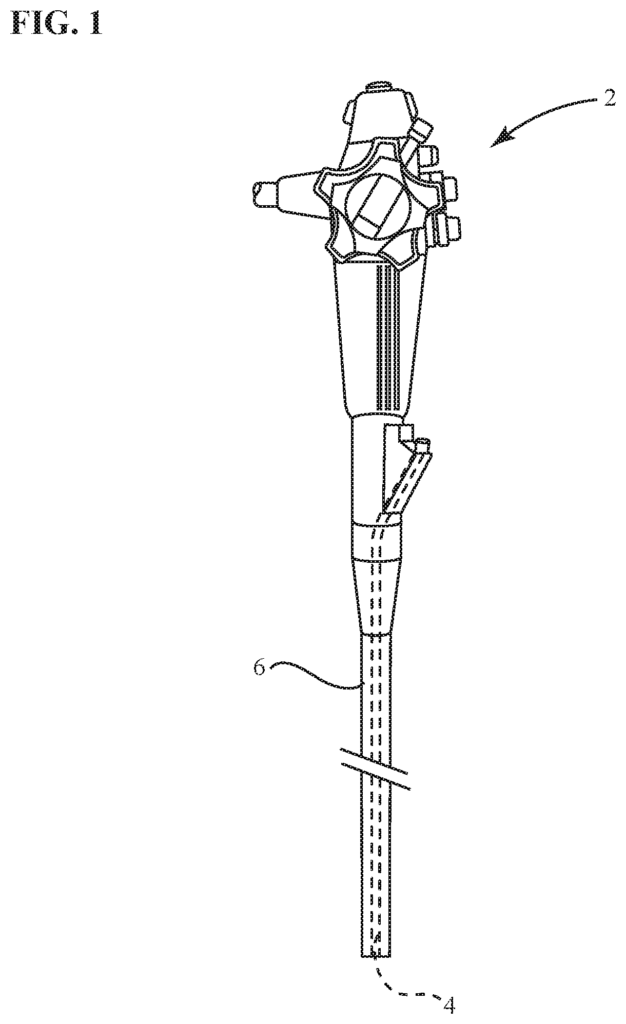
Background for Methods for performing submucosal surgical procedures
The field of gastrointestinal surgery has focused for many years on techniques that can be used to diagnose and treat conditions in the digestive system. Flexible devices, such as endoscopes (which are flexible), balloons, snares, and electrosurgical instruments, have been used to perform general endoscopic procedures such as visualizing tissue, dilation, cutting, and manipulation.
While these devices and techniques are useful for identifying and removing certain neoplastic mucosal lesions as well as providing general access to locations within the digestive system to place submucosal implant, there are still some lesions or areas of the digestive system that are difficult to access. Current endoscopic techniques and tools have difficulty removing large mucosal flat lesions. To diagnose some disorders (such as gastro motility, irritable-bowel syndrome, chronic pseudo-obstruction of the intestine, etc.), it is also necessary to perform a biopsy. A biopsy of the myenteric or muscular wall may be required. These types of specimens require full thickness biopsies, which are difficult to obtain using an endoscopic technique that requires highly skilled closure techniques.
Endoscopic Mucosal Resection is a term used to describe the new endoscopic techniques that have been developed for resecting flat mucosal lesions. “Lift and Cut” is one of the EMR techniques. It involves injecting saline, or another biocompatible solution, beneath the lesion to try to raise it, thus changing its geometry so that it can be resected using conventional snares.
The U.S. Patent No. No. In 5,651,788, a lesion can be identified, and then a catheter can be used to inject saline into the lesion to elevate it. The distal endoscope is fitted with a ligator and suction is used to draw the tissue up into the ligator. The ligator is applied to the tissue, forming a mushroom-like polyp that can be removed with an electrosurgical snare.
Alternatively U.S. Pat. No. No. 5,961,526 discloses an assembly with a coaxial severing needle that uses a needle to puncture tissue adjacent to a lesion target to elevate it using saline. The snare surrounds the lesion after the lesion has been elevated. The lesion will be aspirated in an aspiration tube adjacent to the distal end. The snare will then be tightened so that the surrounding tissue is severed.
While EMR has been shown to be an effective treatment for some flat neoplastic lesion, there are complications and limitations associated with this technique. The size of the lesions that can be resected is a major limitation with this technique. These EMR techniques can only be used to resect mucosal lesion that are smaller than 2 cm. Even though larger or irregularly shaped lesions can be resected piecemeal, it is not recommended because small parts of the lesion could remain. These techniques are also limited by the uncertainty surrounding the area to be resected. After tissue has been suctioned in a cap-ligator or an aspiration cylinder the tissue is adjacent to the visualization device of the endoscope, obscuring its field of vision. The use of the injection needle system is one of the complications associated with EMR. The manipulation of the injection catheter in order to place the needle into the submucosal tissue can lead to puncturing the muscular wall. This may result in infection or peritonitis. Damage to the muscular layer is another complication of EMR. “Saline and non-viscous liquids used to elevate the lesions dissipate fairly quickly after injection into submucosal layers, so that portions of underlying muscle layer can be included in suctioned tissues and inadvertently injured when using the electrical tool for resection.
In order to overcome the size, irregular shape and visual limitations of EMR techniques, an endoscopic submucosal dissection (ESD), has been developed. This procedure marks the perimeter of the target resection, including the lesion. A viscous fluid is injected through an injection catheter into the submucosal tissue, which doesn’t dissipate easily, to cover the entire target resection site. After the resection target area is elevated, an electrosurgical needle blade is used to make an incision through the mucosal layers at the edge. The physician cuts the mucosal tissue along the perimeter of the resection target area using the needle knife. The physician uses the needle to manually cut submucosal connective tissues that bind the mucosal tissue to the muscular wall. After the physician has finished the submucosal resection, it is possible to remove the mucosal tissue in one piece. This procedure is effective in resecting large lesions of irregular shape en bloc. However, it still requires high levels of skill and can lead to complications such as needle perforations or muscular layer injuries.
It is evident that the dissection of the connective tissues of the submucosal area is critical to achieving a successful result. Many investigators have tried to find ways of dissecting submucosal tissue.
In U.S. Pat. No. A method for implanting an esophageal submucosal bulking device has been disclosed in patent 6,098,629 The patent also discloses using a blunt dissecting device to create a pocket under the mucosa. The patent also discloses that a balloon can be inserted into submucosal layers to dilate the tissue and create a submucosal pouch.
In PCT Patent Application No. The WO 02/089655 discloses methods for implanting submucosal implants. The application also discloses different configurations of electrosurgical and mechanical dissection instruments to dissect the connective tissues of the submucosal layers to form a pocket for a gastric device. In the description of mechanical instruments, there are also various configurations for balloon dissection tools.
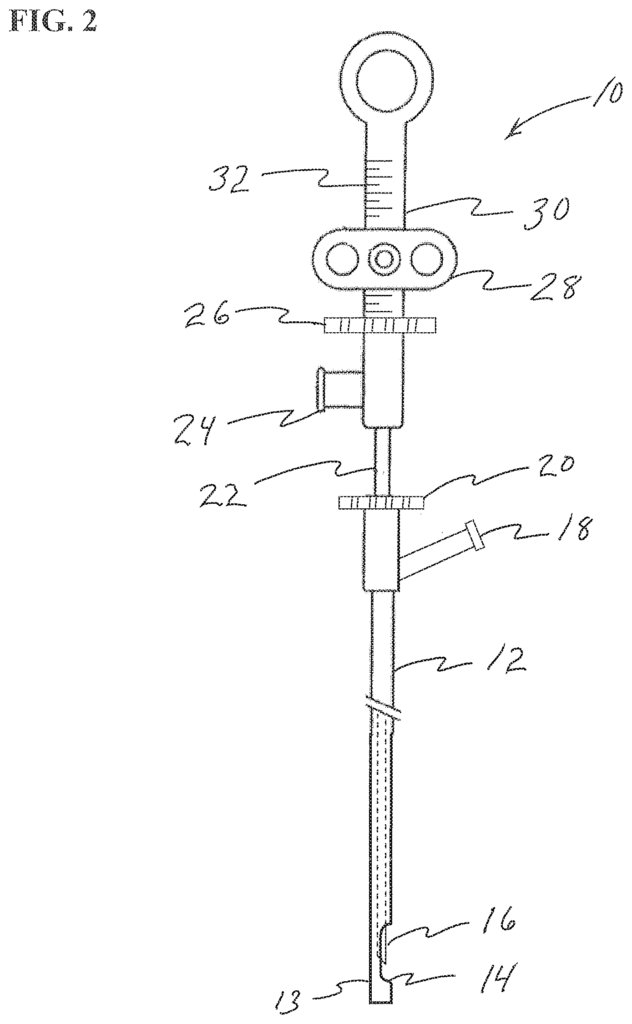
In U.S. Patent Application No. US2005/0149099 discloses a submucosal instrument, system, and method. In addition, the application discloses a high-frequency electrosurgical knife used in conjunction with a balloon for submucosal severance. The method includes the steps of activating the high-frequency knife to create the hole, and then advancing the ball assembly into the hole. As the balloon expands, it dissects the connective tissues of the submucosal layers. The method includes repeating these steps until the entire connective tissue under the lesion has been dissected.
The physician must first advance a substantial portion of a submucosal-dissection instrument while the connective tissues are still intact. In order to achieve this, a pushing force must be applied to the tip to cut the submucosal tissue. The tip of the instrument can injure the muscular wall, or even perforate it.
The initial hole in the mucosal tissue can be seen endoscopically when using the method disclosed. After the balloon assembly has been advanced into the submucosal hole and expanded, a cavity is created. The high frequency knife must then be advanced to form a new hole without visual confirmation. “During the formation of the second hole and subsequent holes without visual confirmation of orientation of the high-frequency knife, there is a danger of perforating either the mucosal or muscular layer.
According to one aspect of the invention, a safe-access needle injection device for mammal use is provided. The safe access injection needle instrument comprises an elongated flexible tube member with proximal, distal and lumens extending through it. The tubular member has a tissue holding component positioned at the distal end. “A needle member with proximal, distal and a lumen running through it is slidably placed within the lumen.
The tissue holding member is integrally molded with the tubular component and has the shape of a window that is adapted to grip the mucosal tissues within the digestive tract. In the lumen of tubular member, distal to window member, a seal plug is located. “When a vacuum source is connected to the proximal part of the tubular members, the vacuum causes mucosal tissues to be suctioned into the window member of tissue holding member.
The needle member is disposed coaxially within the lumen. By axially moving the needle relative to the tube, the distal end can be moved from a position near the window to a position inside the window. The distal end can be moved from a position in the window to a position closer to the window by axially retraction of the needle relative to the tube member. The mucosal tissues are suctioned into the window member when a vacuum is applied. The needle distal tip was moved from the first to the second position in order to penetrate the mucosal tissue layer and reach the submucosal level.
According to another aspect of the invention, a safe-access needle injection device for mammal use is provided. The safe access needle injector includes a flexible elongated tubular sheath with proximal, distal and lumens extending through it. The distal end is equipped with a tissue holding component. “A needle member with proximal, distal and a lumen running through it is slidably placed within the lumen.
The tissue holding device is a pair operable jaws attached to the distal tip of a long shaft member. The jaws can be used to grasp the mucosal tissues within the digestive tract. The elongated shaft member is slidably located within the lumen the tubular sheath. Jaws can be moved from an open position where the jaws are biased inwards when unconstrained to a close configuration when the jaws are partially or fully constricted. The jaws can be moved from an open configuration when the tissue holding member is adjacent to the distal tip of the tubular member sheath and they are not constrained.
The needle member is coaxially located within the lumen. By axially moving the needle relative to the shaft member, the distal end can be moved from a position near the jaws of the tissue-holding member to a position between them. The distal end can be moved from a position between the jaws of the tissue-holding member to a position closer to the jaws, by axially retraction the needle relative to the shaft member. The mucosal tissues are held in place between the jaws when the jaws are moved from an open configuration to a closed configuration. The needle distal tip is moved from the first to the second position, allowing the tissue to be penetrated and the submucosal layers to be reached.
According to another aspect of this invention, the needle element further comprises a stop component located adjacent to the distal end. The stop member is engaged by the mucosal tissues when the distal tip of the needle member penetrates the mucosal layers. This limits the depth at which the needle can penetrate the mucosal layers. The stop member may seal the needle once it engages the mucosal tissues.
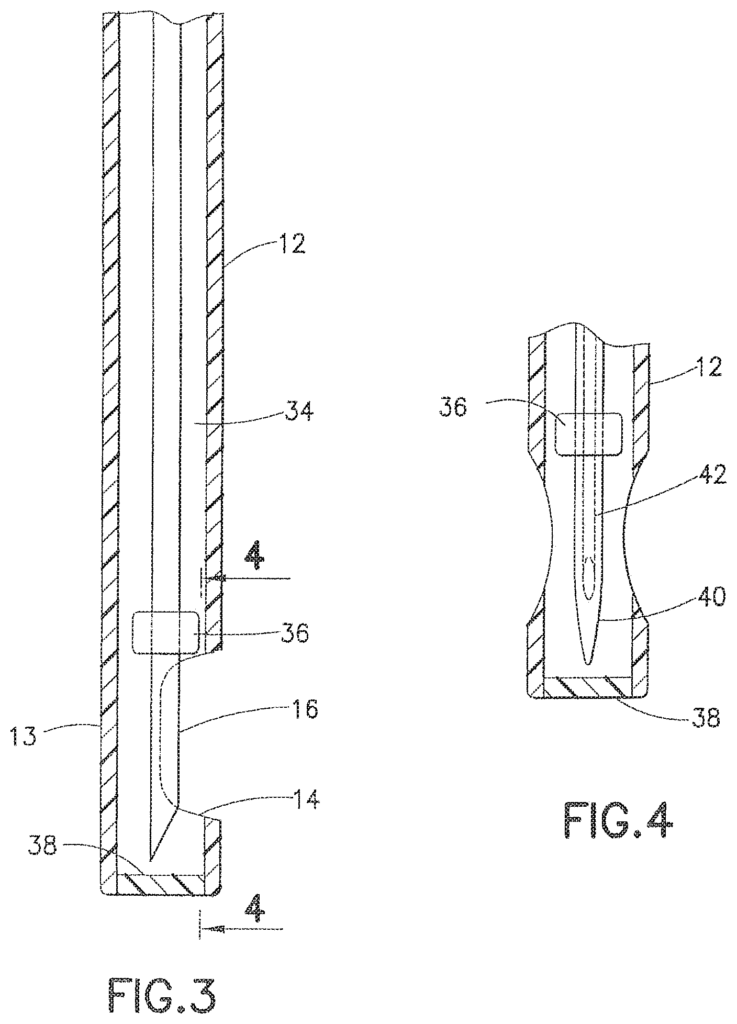
According to a further aspect, the invention provides a method for using a safe-access needle instrument in order to create a safety bead beneath the mucosal layers of the digestive tracts of mammals. The method also includes the step of supplying a safe-access needle injection device. The safe access needle injecting instrument includes a tubular element, a tissue holding element and a needle member that is slidably located within the lumen. Inserting the safe-access needle injection instrument into the digestive tract through a natural orifice of a mammal is also part of the method. The method also includes the step of operating the safe-access needle injection instrument so that the tissue holding component engages mucosal tissues. The method includes also the step of puncturing the mucosal layers with the needle member. The method also includes injecting fluid into the submucosal tissue through the needle member.
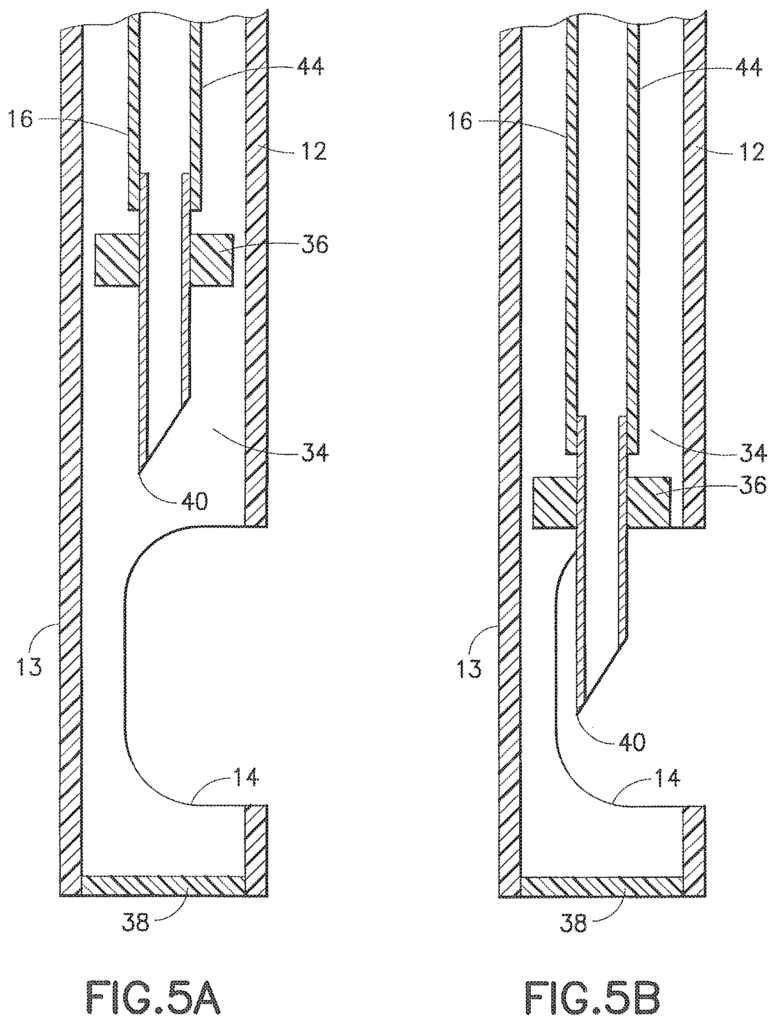
Click here to view the patent on Google Patents.
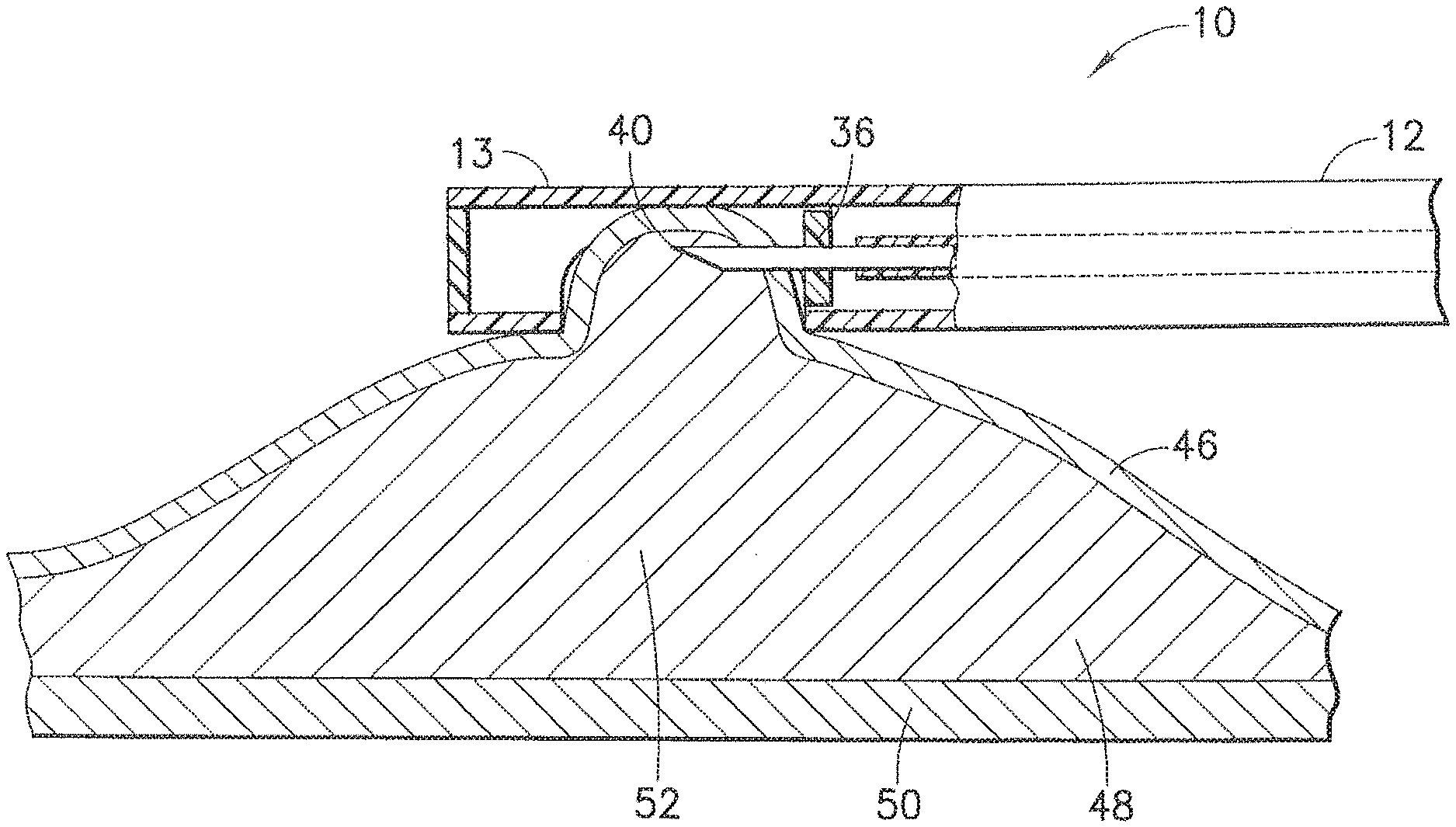
Leave a Reply